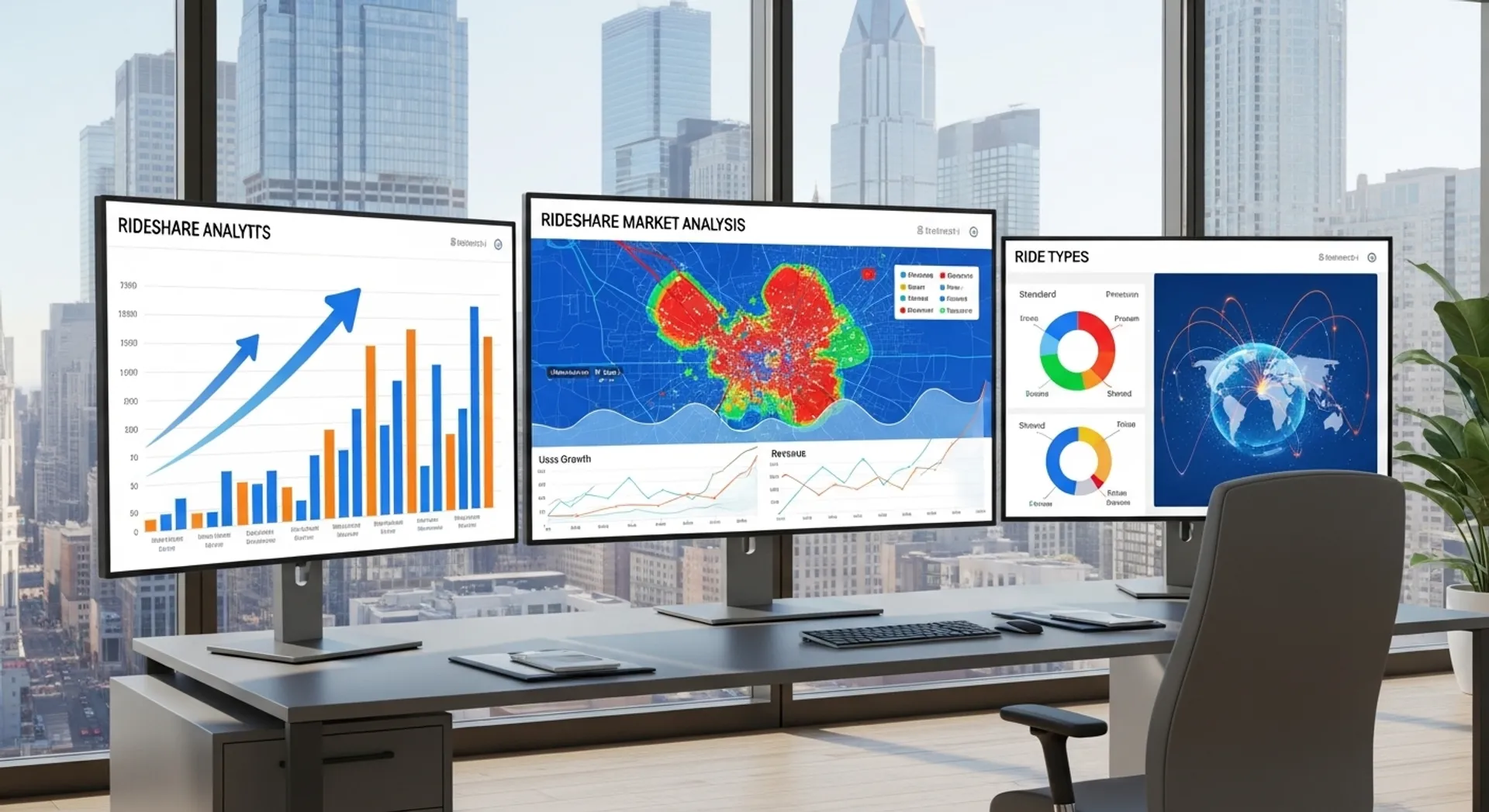The ridesharing industry has evolved dramatically since its inception, transforming from a simple alternative to traditional taxis into a multifaceted ecosystem that’s reshaping urban mobility worldwide. As we navigate through 2025, the sector continues to experience unprecedented innovation, driven by technological advancements, changing consumer expectations, and pressing environmental concerns. Understanding these emerging trends is crucial for anyone invested in the future of transportation.
The global ridesharing market has demonstrated remarkable resilience and growth, with industry analysts projecting the market to reach $344 billion by 2028. This expansion isn’t merely about more rides — it’s about fundamentally reimagining how people move through cities, how vehicles are utilized, and how transportation integrates with our digital lives.
The Rise of Autonomous Ridesharing Services
Autonomous vehicles represent perhaps the most transformative trend in the ridesharing landscape. Major players in the industry have significantly accelerated their self-driving initiatives, moving beyond pilot programs into commercial deployment in select markets. Self-driving technology promises to reduce operational costs, improve safety metrics, and provide 24/7 service availability without driver fatigue concerns.
Companies like Waymo and Cruise have already logged millions of autonomous miles, with Waymo operating commercial robotaxi services in San Francisco and Phoenix. The implications for traditional rideshare platforms are profound — the technology could potentially reduce ride costs by up to 50% by eliminating driver compensation, which currently represents the largest operational expense.
Regulatory Challenges and Public Acceptance
Despite technological progress, autonomous ridesharing faces significant regulatory hurdles. Cities and states continue to grapple with creating frameworks that ensure public safety while fostering innovation. Public trust remains another critical factor, with surveys indicating that approximately 60% of consumers still express hesitation about riding in vehicles without human drivers.
The transition period will likely see hybrid models where human drivers and autonomous vehicles operate alongside each other, gradually building consumer confidence through demonstrated safety records and seamless user experiences.
Sustainability and Electric Vehicle Integration
Environmental consciousness has shifted from a competitive advantage to a business imperative. Rideshare platforms are aggressively pursuing electrification strategies, with major commitments to transition their fleets to electric vehicles by 2030 or earlier. This trend aligns with broader urban sustainability goals and increasingly stringent emissions regulations.
The integration of electric vehicles into rideshare fleets addresses multiple concerns simultaneously. It reduces carbon emissions, lowers fuel costs for drivers, and meets growing consumer demand for environmentally responsible transportation options. According to research from the International Energy Agency, electric vehicle adoption in commercial fleets is accelerating faster than in private ownership, driven by favorable total cost of ownership calculations.
Infrastructure Development and Charging Solutions
The success of electric rideshare fleets depends heavily on charging infrastructure availability. Forward-thinking platforms are partnering with charging network providers and investing in dedicated charging hubs for their drivers. Some companies are even exploring battery-swapping technologies that could reduce downtime and keep vehicles in service longer.
Incentive programs for drivers who switch to electric vehicles have proven effective, with subsidies, preferred ride allocations, and reduced commission rates accelerating adoption rates significantly.
Multimodal Transportation Ecosystems
The modern rideshare platform is evolving beyond simple point-to-point car services into comprehensive mobility solutions. This multimodal approach integrates various transportation options — bikes, scooters, public transit, and traditional rideshares — into single, user-friendly applications that optimize for cost, time, and convenience.
This trend reflects a fundamental shift in how companies position themselves. Rather than merely providing rides, they’re becoming mobility orchestrators that help users navigate cities using whatever combination of transportation modes makes the most sense for their specific journey. Industry research suggests that integrated multimodal platforms increase user engagement and trip frequency substantially.
Seamless Payment and Journey Planning
The technical challenge lies in creating seamless experiences that handle routing, payment, and real-time adjustments across different transportation providers. Advanced algorithms now optimize journey plans by considering factors like traffic conditions, weather, event schedules, and personal preferences, delivering recommendations that balance speed, cost, and comfort.
Users might receive suggestions to take a scooter for the first mile, catch public transit for the main journey, and finish with a rideshare to their final destination — all managed through a single app with unified billing.
Data-Driven Personalization and Predictive Services
Artificial intelligence and machine learning have become foundational technologies powering next-generation rideshare platforms. These systems analyze vast amounts of data to predict demand patterns, optimize driver positioning, and personalize user experiences with remarkable accuracy.
Predictive algorithms can now anticipate when and where users will need rides based on their historical behavior, calendar appointments, and even weather forecasts. Some platforms are experimenting with proactive ride offers that arrive before users even open the app, reducing wait times and improving service efficiency.
Enhanced Safety Through Technology
Data analytics also contribute significantly to safety improvements. Real-time monitoring systems detect unusual route deviations, sudden stops, or other anomalous patterns that might indicate problems. Continuous driver behavior analysis identifies risky patterns and enables targeted coaching interventions before incidents occur.
Advanced verification systems using facial recognition and continuous authentication help ensure that registered drivers are actually operating vehicles, addressing a persistent security concern for passengers.
Subscription Models and Flexible Pricing Strategies
The traditional per-ride payment model is being supplemented with subscription offerings that provide users with predictable monthly costs and certain benefits like reduced rates or priority access during peak times. These subscription tiers appeal particularly to frequent users who value budget certainty and convenience.
Dynamic pricing algorithms have also become more sophisticated, moving beyond simple surge pricing to more nuanced systems that consider individual user price sensitivity, loyalty status, and competitive alternatives. Some platforms are experimenting with fare caps that limit surge pricing during emergencies or extreme weather events, balancing profitability with social responsibility.
Corporate and Commuter Programs
Business-to-business offerings represent a growing revenue stream, with customized programs for corporate clients that provide employees with managed transportation benefits. These programs offer companies visibility into transportation spending while giving employees convenient commute options that can be tracked and expensed seamlessly.
Commuter-focused subscriptions with guaranteed pickup times and preferred driver matching cater specifically to the daily commute market, offering reliability that appeals to suburban workers traveling to urban employment centers.
Navigating the Road Ahead
The ridesharing industry stands at a pivotal moment, with technological capabilities, market demands, and regulatory frameworks converging to enable transformative changes in urban mobility. While challenges remain — particularly around workforce transitions, regulatory compliance, and infrastructure development — the trajectory points toward more efficient, sustainable, and user-centric transportation systems.
For riders, these trends promise more choices, better prices, and improved experiences. For cities, they offer potential solutions to congestion, pollution, and accessibility challenges. The companies that successfully navigate these trends while balancing innovation with responsibility will define the next era of urban transportation.
As the industry continues its rapid evolution, staying informed about these trends isn’t just important for industry insiders — it matters for anyone interested in the future of how we move through our cities and live our daily lives. The ridesharing revolution is far from over; in many ways, it’s just beginning.








